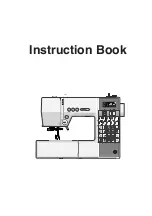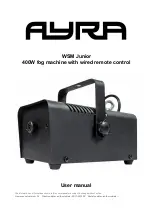
10 – 4 Seaming sheers with rolled edge
Use the three – thread narrow edge setting when sewing sheer fabrics which would normally require French seam
finishing. The stitch length should be set at “2” and tension may be adjusted for a rolled or non – rolled finish,
according to your preference. Then, simply sew seams, aligning fabric with seam marks, and trimming away excess
fabric.
10 – 5 Lettuce edge
A fluted, or “lettuce” edge can be created on most light and medium weight stretch fabrics, including interlock,
jersey and ribbing, and it can also be done along the bias edge of soft, woven fabrics. It is appropriate on
sportswear, childrens wear, and accessories, but can also be very effective on eveningwear.
Set the machine for two – thread or three – thread rolled edging (rolled or unrolled), stitch width “M”. Edge the fabric
in the direction of greatest stretch, usually the crossgrain, or in the case of wovens, along the bias. More “lettucing”
can be developed by either slightly stretching fabric in front of presser foot as you sew, or stretching edge after it
has been sewn.
10 – 6 Resetting from narrow rolled edge to four – thread serging
1. Open both the front and side cover.
2. Raise the needle to the highest position.
3. Replace the stitch width former into groove of the lower
knife base until it snaps by pushing position lower knife
base by aligning the red indicator on the lower knife base.
Push the stitch width former back into position until it
snaps.
NOTE: Before installing the Stitch Width Former, remove any lint or dust from the channel with your lint brush or a
compressed air product.
27









































